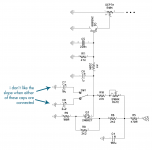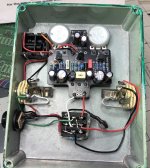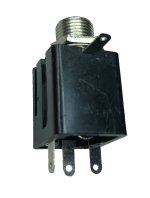xefned
Well-known member
I know this seems like a crazy question since there's a mode switch, and 2 of the positions go plenty slow, but those other positions also seem to change the ramp, or waveform shape. I only like it when SW1 is in the center (NC) position.
But that position doesn't go quite slow enough to match the tempo of a lot of songs. It's close though.
I'm guessing I should start with either R10 or C6. Any suggestions appreciated.
Woodpecker fragment attached.

But that position doesn't go quite slow enough to match the tempo of a lot of songs. It's close though.
I'm guessing I should start with either R10 or C6. Any suggestions appreciated.
Woodpecker fragment attached.




